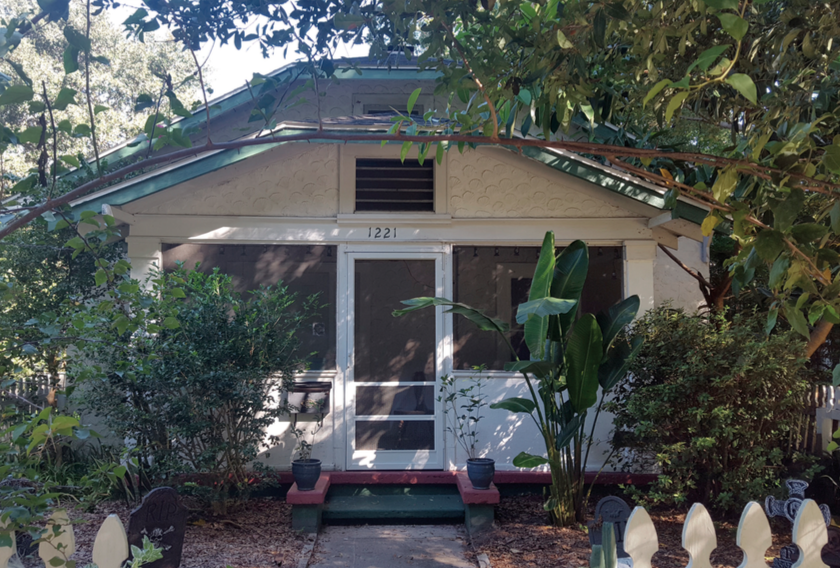Fall—the air is a little bit lighter than it has been. Should we thank Hurricane Matthew for the change of season? It’s as if it spun by and popped the bubble of heat and moisture that had been weighing us down. As we quickly recover from the storm, I thought it would be a good opportunity to write about architecture from the point of view of my 1926 bungalow facing the threat of a hurricane. I imagine it would go something like this:
“I’m tired. My shingles are shriveled up. Are we expecting much rain? If only I could jerk my head in a little more. Perhaps all these cracks in my stucco will lower the wind resistance so I won’t have to fight as hard. That would be nice. For years they called me promiscuous; I called them renters. They said it would weigh on my structure, but I consider it character building. Long before the ropes were cut on my double hung windows, before I was practically painted shut, I could have invited the wind in. I can almost feel it breezing over my thick plaster walls and up through my prominent and open fireplace, blowing years of cobwebs out of my strong brick chimney. I suppose if the storm gets rough enough, the cemetery is close by; we could rest there.”
I had to cut my house off there. I wasn’t sure where this was going. Let’s talk history. Back before it was where we got our local Orlando news, the bungalow was designed by the British in mid-19th-century India. It is intended to be simplistic, natural, and fitting of its warm environment. It wasn’t until the early 20th century that “kit” homes started showing up. We give most credit to the Sears & Roebuck Company, but it was the Aladdin Company of Bay City, Michigan that started offering full kits, right down to the nails. Local contractors were then hired to put the whole thing together. This spread through the country like wildfire. The thought had to be, why build custom when you can mass-produce for the average consumer?
Today, bungalows are not considered standard or basic. They have become great examples of customization and, due to their age, generally reside on tree-lined streets in established parts of town. A far cry from from where they began.

